Chinese Monster Lantern--Recreating mythical monsters from 1000 years ago
In April 2024, on the night of a forest park in Guizhou, the first lantern exhibition-Chinese monster lantern with the theme of mythical beasts opened. For the development of lanterns in China this year, the themes have gradually become more sci-fi and exquisite. In the same way, mythological and mythical beasts became commonplace.
In recent years, the lantern art of Chinese has undergone a profound transformation and innovation, with this traditional art form regaining new vitality in modern society. As technology improves and craftsmanship gets better, making lanterns has become harder. This challenges craftsmen and encourages them to explore new creative areas.
In this process, mythological stories and monster images have become common themes in lantern art, attracting the attention of audiences with their mysterious and strange characteristics, and stimulating people’s imagination.
Chinese monster lantern different from traditional Chinese lanterns
1.Traditional Chinese Paper Lanterns
Historical Origins:
Traditional paper lanterns have a history spanning over two millennia. The earliest paper lanterns appeared during the Han Dynasty (202 BCE–220 CE), initially used for palace lighting before gradually spreading to the general populace. By the Tang and Song periods (618–1279 CE), advancements in papermaking techniques allowed lanterns to become central to the Lantern Festival (Yuanxiao Festival), evolving into diverse styles as the festival flourished. During the Ming and Qing Dynasties (1368–1912), paper lanterns became essential for weddings, temple fairs, and festivals, eventually spreading across East Asia.
Major Types:
By Shape:
Round Lanterns (e.g., palace lanterns, red lanterns)
Square Lanterns (e.g., character lanterns, “Fu” blessing lanterns)
Animal/Plant-Shaped Lanterns (e.g., fish lanterns, lotus lanterns)
Revolving Lanterns (zouma deng, animated by heat-driven rotation)
By Function:
Festival Lanterns (Spring Festival, Lantern Festival, Mid-Autumn Festival): Primarily red, symbolizing joy and luck
Wish Lanterns (e.g., Kongming sky lanterns, water lanterns): Released during the Mid-Autumn Festival or Qixi Festival, inscribed with prayers
Lighting Lanterns: Historical tools for night illumination, such as handheld or street lanterns
Decorative Lanterns: Used in gardens, teahouses, or taverns, often made of silk or gauze
Crafting Techniques:
Traditional Chinese paper lanterns are crafted using bamboo or wire frames covered with rice paper, silk, or gauze. Artisans hand-paint motifs (e.g., dragons, flowers) or inscribe calligraphy before adding a candle or modern light source. The zouma deng (revolving lantern) exemplifies ancient engineering—its paper vanes rotate figures via heated air currents, demonstrating early mastery of thermodynamics.
Read more about traditional Chinese lanterns: https://www.paintinglantern.com/chinese-lantern-a-chinese-heart/
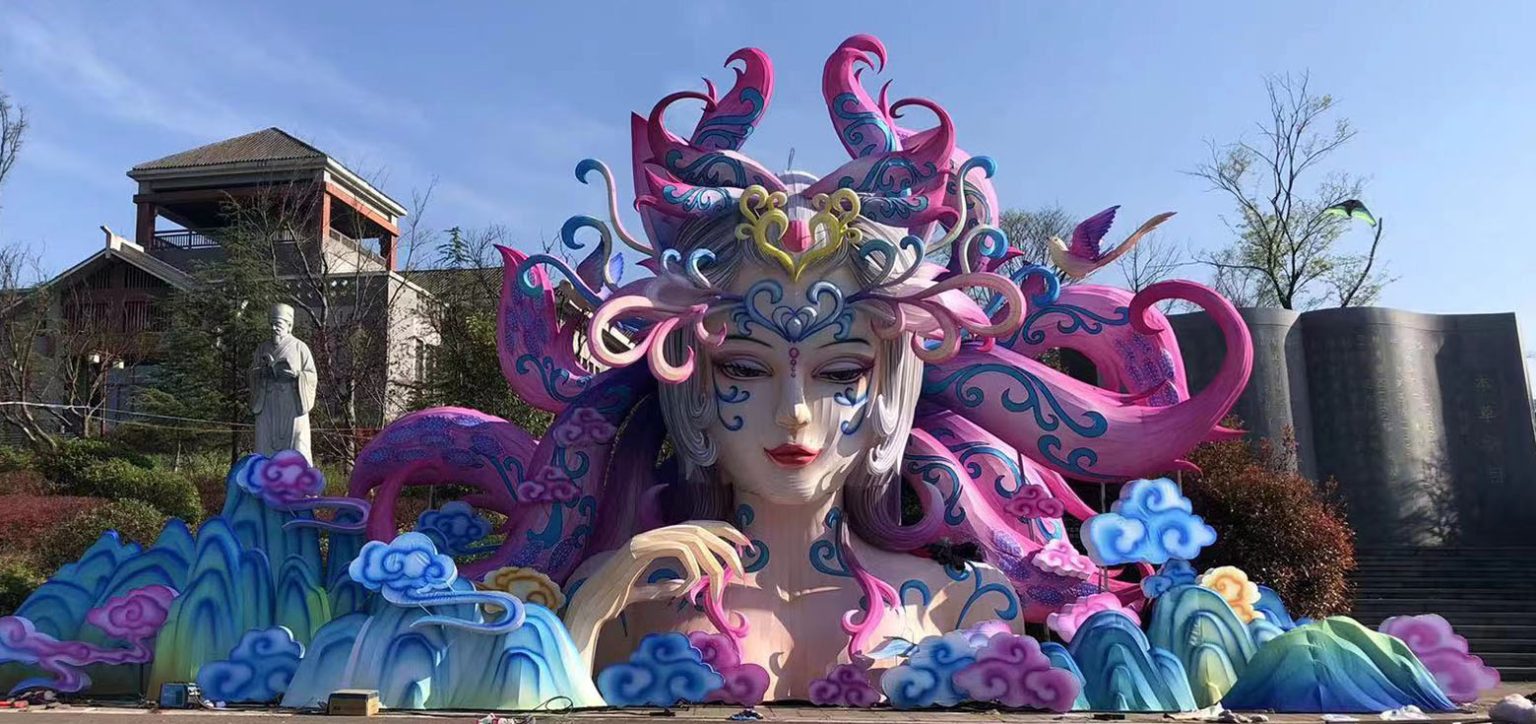
2.Modern Lantern Reinvention
Compared with the paper lanterns that can be seen during traditional Chinese holidays, nowadays visitors are more eager to see different, more novel, and more dreamy themes. Therefore, the myths of various countries have become the focus and research direction of FOREST PAINTING LANTERN. We have also participated in the production and design of dream-themed lanterns around the world in recent years!
Introduce the theme of mythological stories: This year, Zunyi Eco-Park’s theme is “Fantastical Wonders from the Shan Hai Jing,” drawing inspiration from the ancient Chinese mythological classic Shan Hai Jing (Classic of Mountains and Seas). These mythical Chinese creatures differ significantly from the park’s common animal-themed lanterns. With their more intricate shapes and colossal scale—featuring towering heights or expansive wingspans—they pose greater technical challenges to create. Yet precisely for this reason, these monstrous lanterns ultimately deliver a truly awe-inspiring spectacle, proving far more breathtakingly spectacular than traditional lantern designs.
Integration of Innovation and Traditional Craftsmanship:Lantern craftsmen combine traditional paper lantern and modern techniques, integrating exquisite carving, painting, and decorative skills into the making of lanterns. They meticulously design every detail, from the structure of the lantern body to the surface decoration, all reflecting respect for traditional craftsmanship and the pursuit of innovation. These lanterns are not only Chinese holiday decorations but also Chinese culture symbols, presenting China’s rich history and culture to the world in a vivid and intuitive way.
Breaking Free from Traditional Festival Boundaries: Modern Chinese lanterns, extending far beyond mythical creature designs, have long shed their traditional role as seasonal decorations. During non-festival periods, they now serve as permanent attractions in large-scale scenic areas and wildlife parks, creating a symbiotic model of cultural integration. For instance:
Jiangsu’s Wuxi Ling Mountain Scenic Area features blue lotus lanterns as a summer hotspot;
Huangshan Mountain Camping Base draws visitors with Nezha-themed installations;
International venues like Germany’s Serengeti Safari Park and France’s Parc le Pal have incorporated Chinese lanterns into their permanent exhibits.
Moreover, Chinese lantern exhibitions strategically fill the winter gap (spanning Christmas to Lantern Festival) in Western carnival calendars—traditionally concentrated in summer—effectively helping cultural tourism venues achieve year-round operation.
Today, Chinese lanterns have evolved into global, perennial large-scale landscapes and visitor magnets. Even Chinese mythical creature lanterns can be adapted to mythological narratives worldwide, crafting exclusive “divine beast” installations that transcend cultural borders.
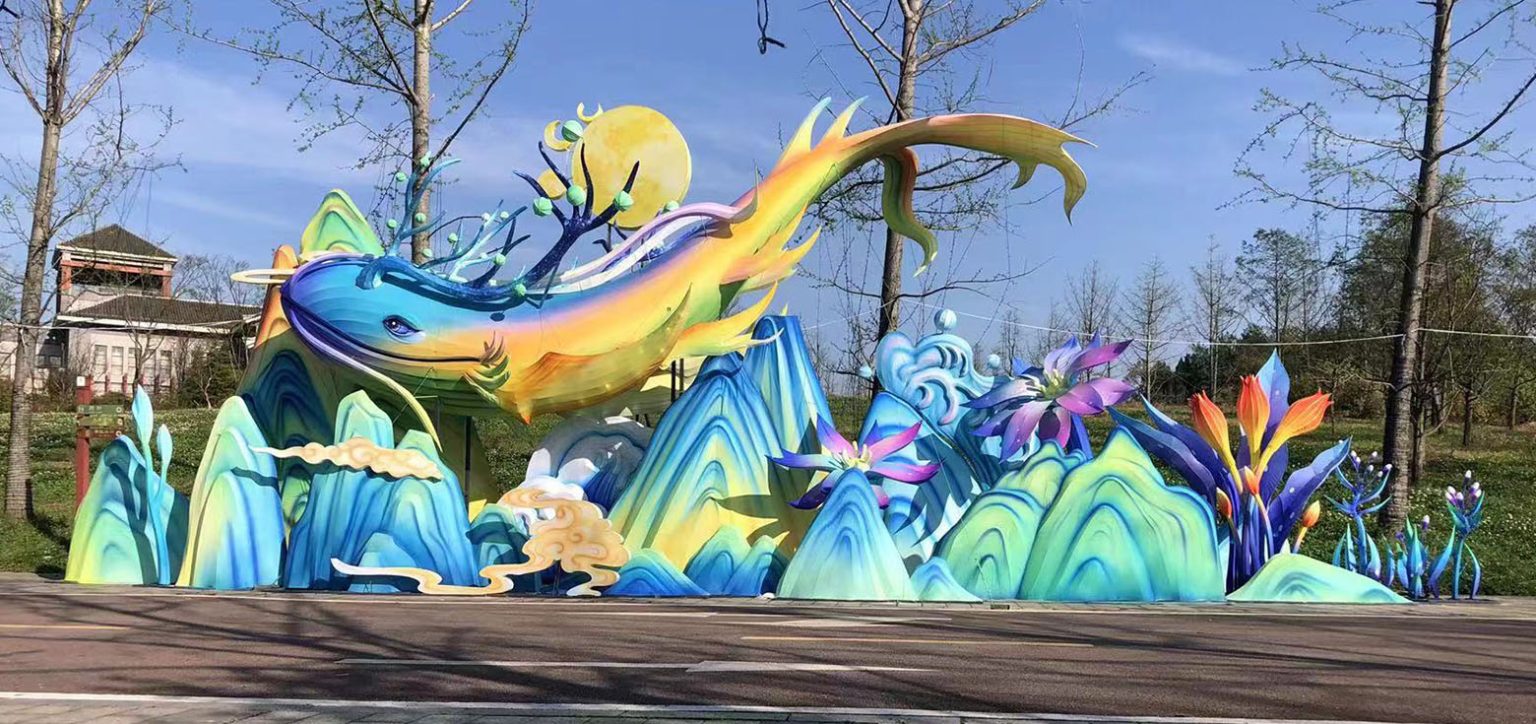
The ecological park this time faces the entire city center. The originally mature ecological environment combined with our dreamy-colored Chinese monster lanterns.
With the continuous advancement of lantern-making technology, modern elements have been cleverly integrated into traditional lanterns, making these works both classical and modern. For example, some lanterns have begun to use LED lights and electronic control technology, making the lighting effects more colorful and dynamic changes more flexible. These innovations not only enhance the ornamental value of the lanterns but also inject new vitality into traditional art.
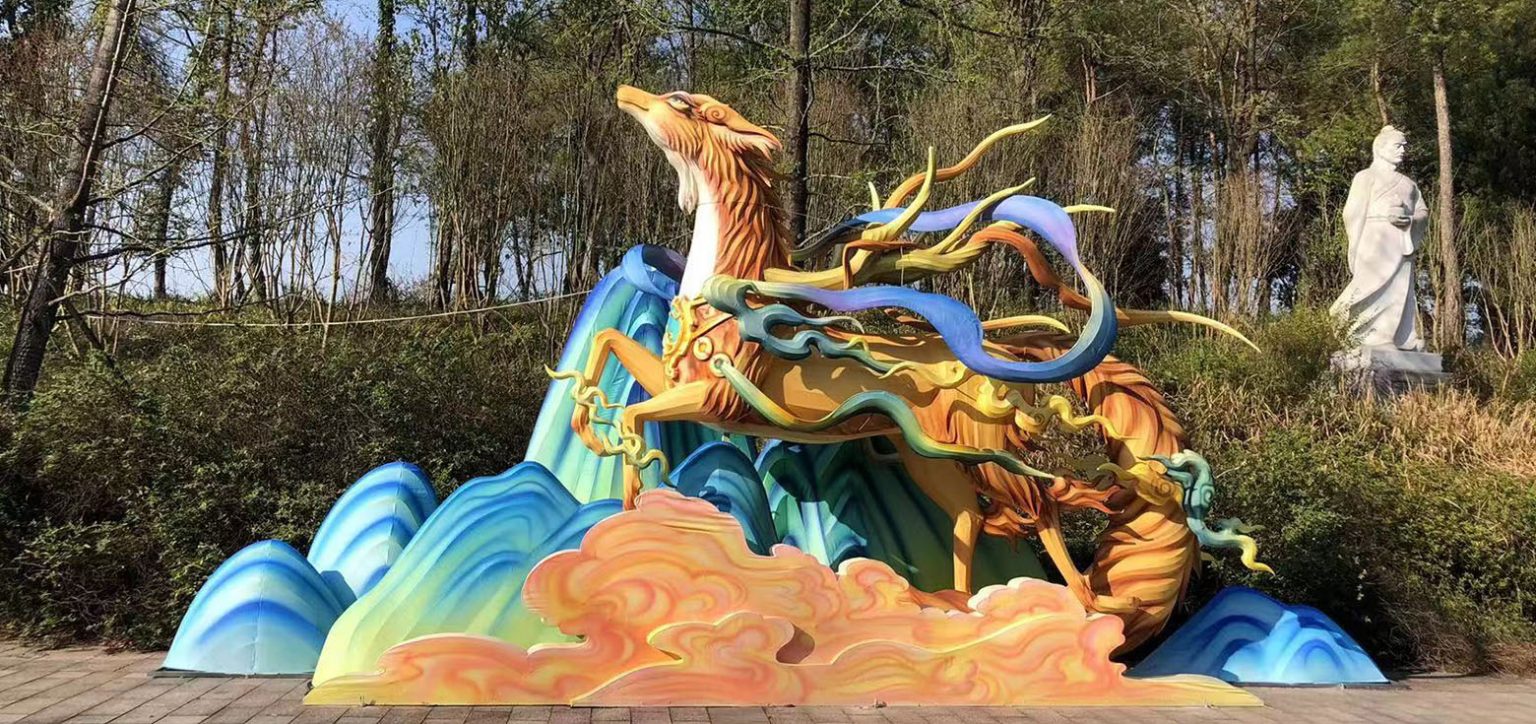
The pursuit of perfect replication of Chinese mythological creatures
This year’s Zunyi Ecological Park is themed “Miracles of the Shan Hai Jing,” created with elements from the ancient Chinese myth “Shan Hai Jing.” The production of each Chinese monster lantern is a challenge for us.
1. In-Depth Cultural Interpretation: The Shan Hai Jing (Classic of Mountains and Seas), as one of China’s oldest compendiums of myths, documents hundreds of mythical creatures. These beings are not merely products of ancient imagination but embody profound cultural values—including nature worship, tribal totems, moral warnings, and cosmic understanding. Consequently, before designing their physical forms, we must deeply interpret each creature’s cultural symbolism to ensure accurate visual representation.
Auspicious Beasts (Symbolizing Divine Protection and Civilizational Origins)
Phoenix (Fènghuáng) : Symbolizes universal peace and the harmony of yin and yang.
Baize (Báizé) : Embodies omniscient wisdom and virtuous governance.
Dangkang (Dāngkāng) : Represents agricultural abundance and harvest.
Ominous Beasts (Symbolizing Calamity and Moral Admonitions)
Taotie (Tāotiè) : Signifies insatiable greed and serves as a warning against abuse of power.
Qiongqi (Qióngqí) : Epitomizes the perversion of justice and judicial punishment.
Nature Spirits (Symbolizing Cosmic and Vital Forces)
Yinglong (Yìnglóng) : As the deity of rain, governs warfare and flood control.
Kunpeng (Kūnpéng) : Embodies transcendent freedom and the metamorphosis of life.
As demonstrated by the Chinese mythological creatures mentioned above, each embodies unique cultural symbolism. Only through profound understanding can we craft the most authentic mythical creature lanterns—ones that truly honor their spiritual legacy.
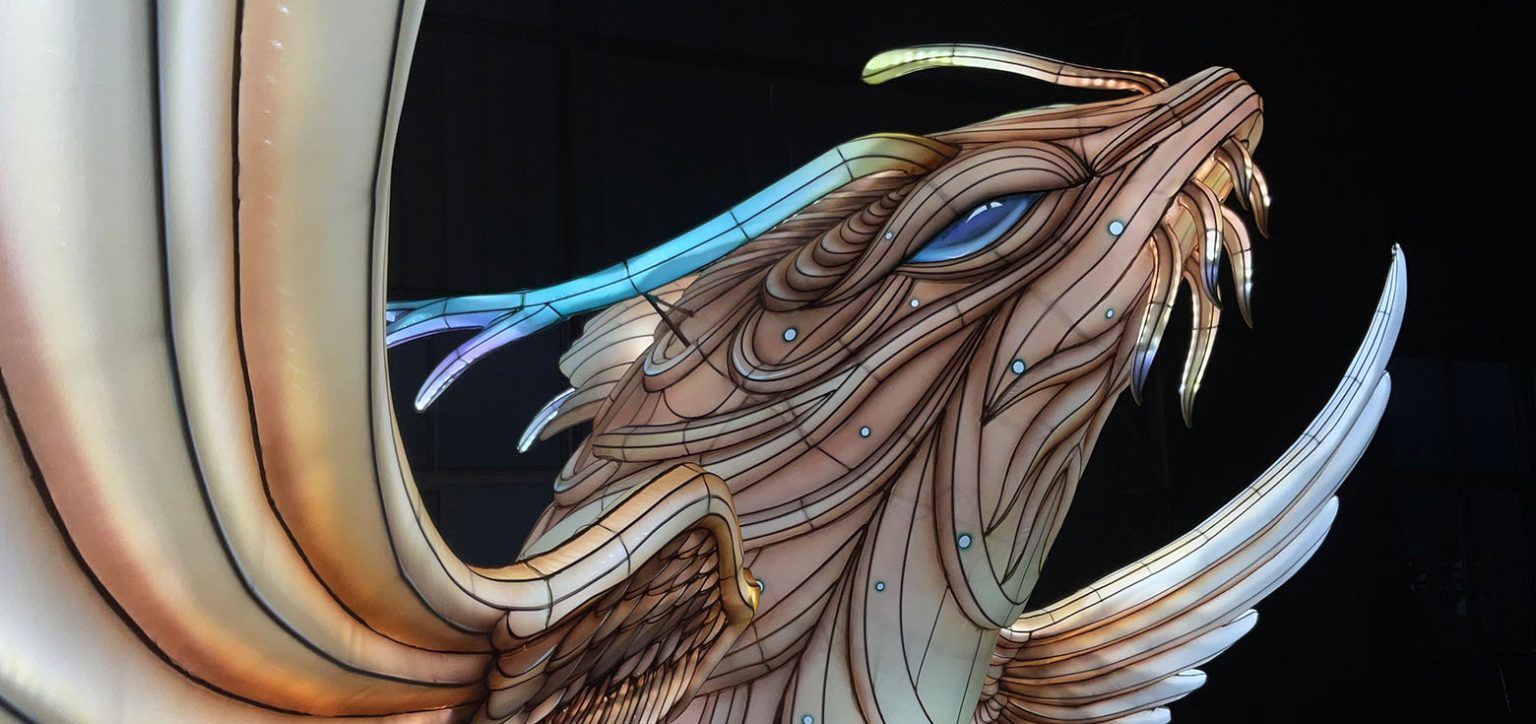
Detailed styling design
The shape design is the soul of the lantern art, which not only needs to reflect the theme and cultural connotation of the lantern, but also takes into account the visual effects of the lantern in different angles and light.
Designers have to delve into traditional Chinese culture symbols and draw inspiration from them, while incorporating modern aesthetics to create looks that are both classical and modern. This requires the artist to have a deep cultural heritage and a keen aesthetic eye, as well as a deep understanding of material properties and production processes.
To avoid mistakes in appearance and shape, we usually conduct detailed research and comparison for each model. After that we consulting materials from various countries’ myths. To achieve the most perfect image of mythical beasts in the hearts of visitors! Our technology is mature, to undertake many large exhibitions, rich experience.
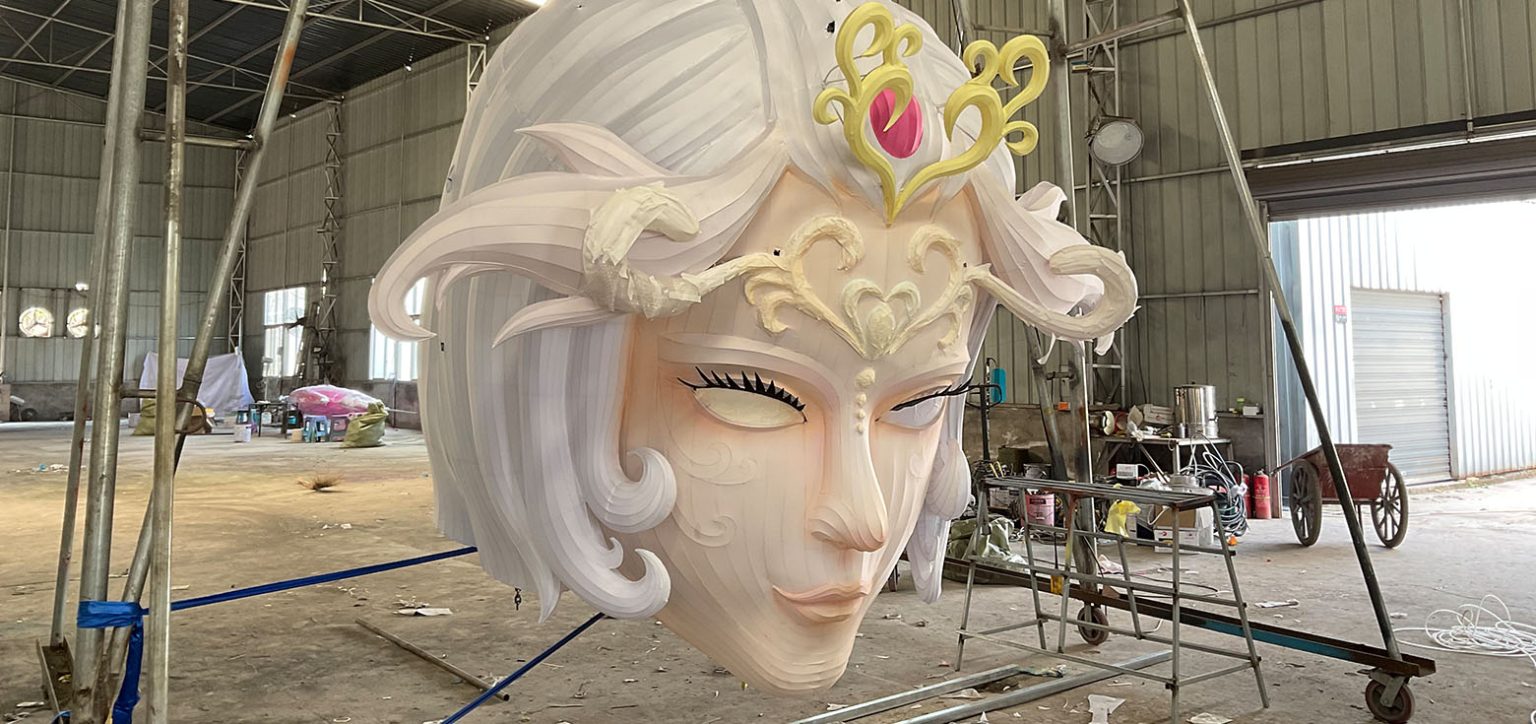
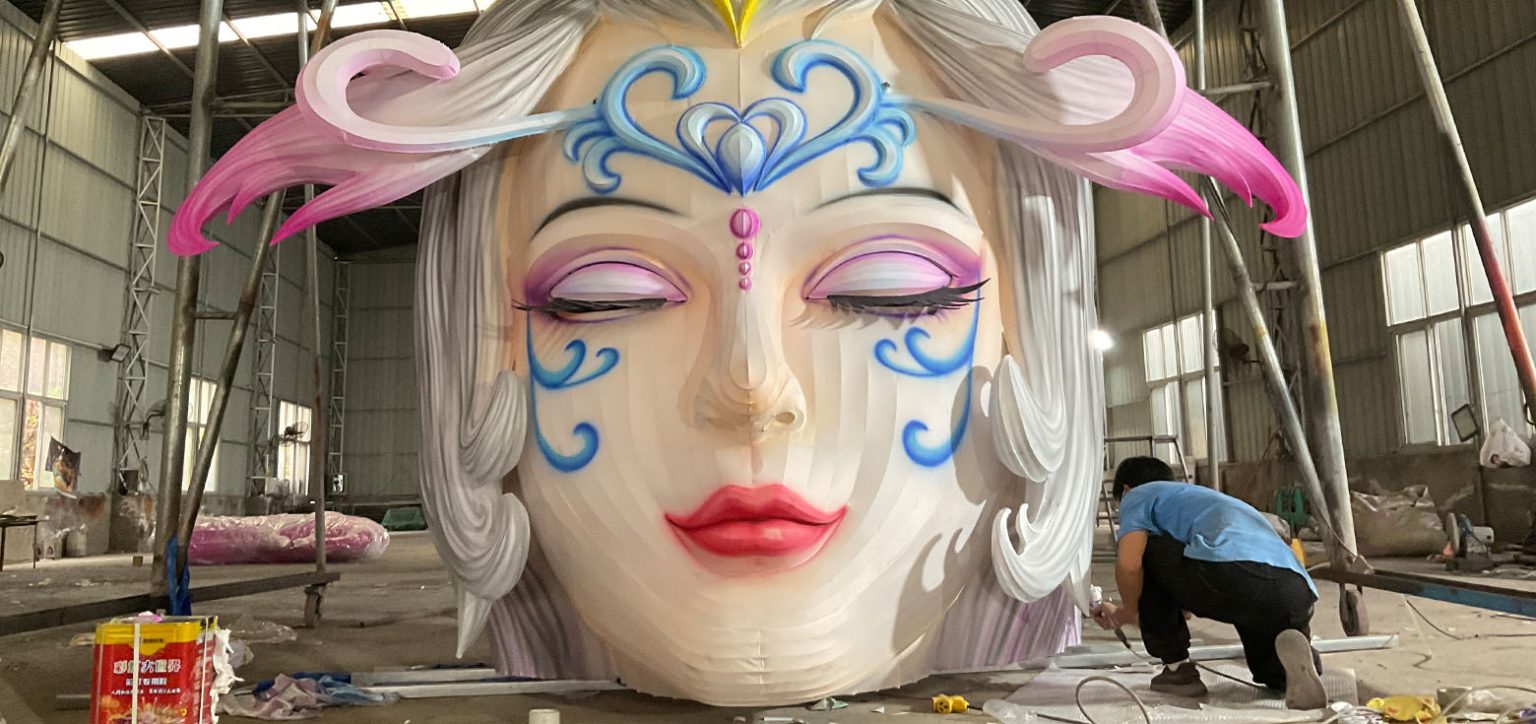
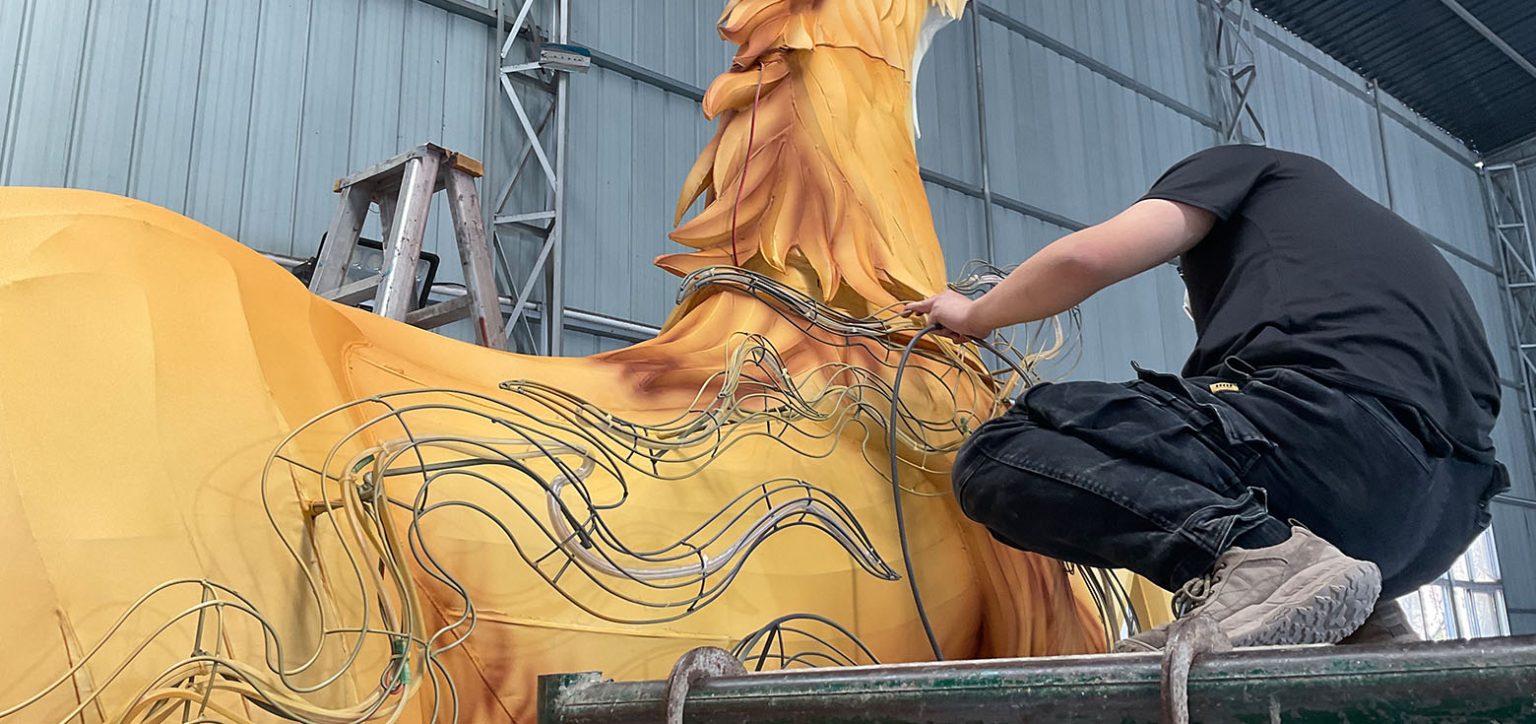
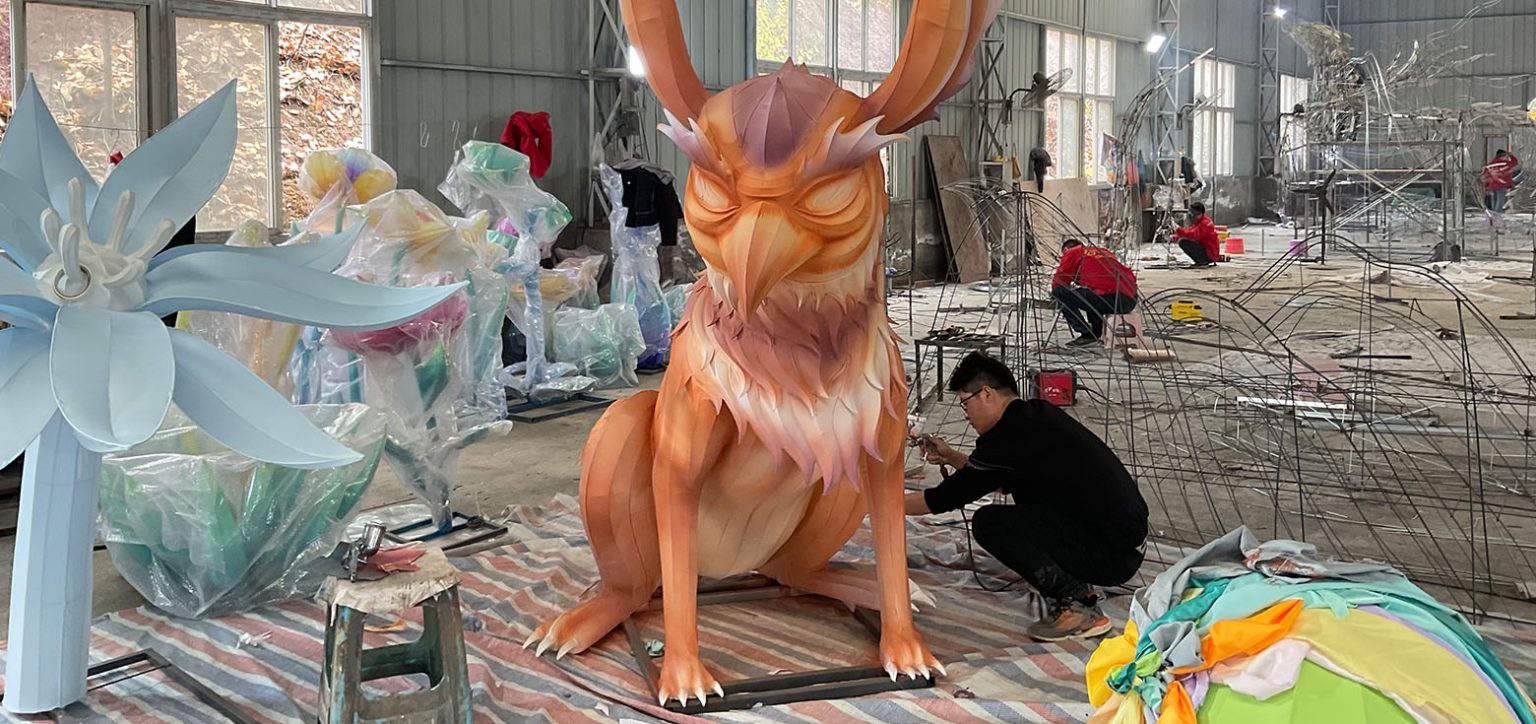
Precise Color Control
In the process of making lanterns, the most challenging part is the precise control of shape and color. Lantern of Chinese are different from static sculptures. They are dynamic works of art, as if brought to life and able to shine at night. This unique art form requires that we must strive for excellence in every detail when creating, especially in the shape design and color matching, and can not tolerate any carelessness.
Color spraying is the external expression of the lantern art, which directly affects the ornamental effect and emotional transmission of the lantern. In the choice of color, we should not only consider the traditional cultural significance of color, but also consider the impact of color on human psychology. Each color has its own unique language and emotion, how to skillfully integrate these colors together to form a harmonious and rich level of visual effects, is a problem that every lantern maker must face.
FOREST PAINTING LANTERN adheres to the principle of striving for excellence in every product, bringing the characteristics of Chinese lantern craftsmanship to the extreme!
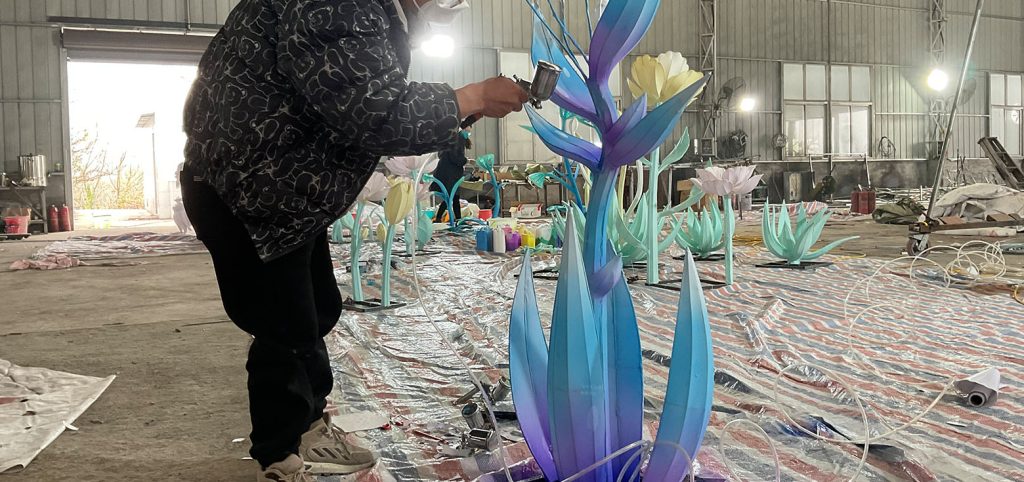
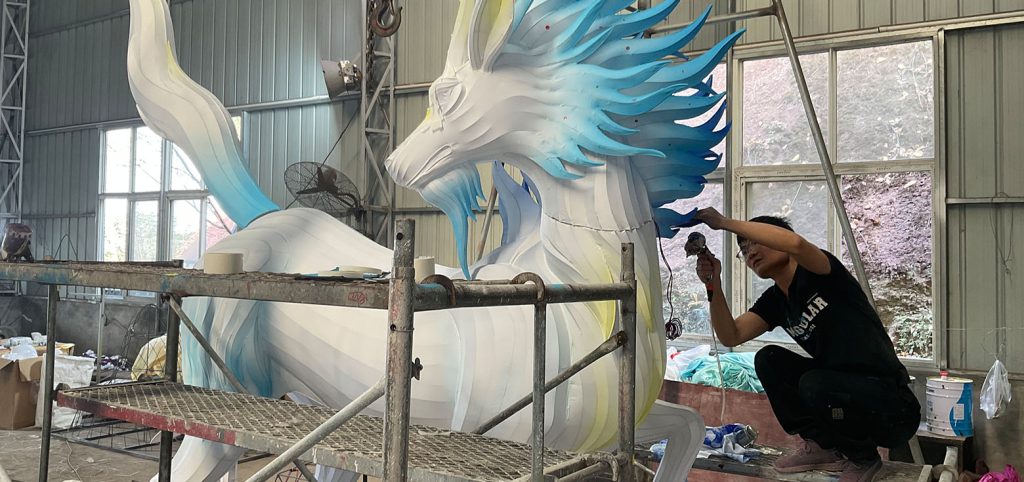
Recreating the Fantastical Lantern Realm
We meticulously craft a lantern exhibition themed around mythological tales, recreating every mythical being—from awe-inspiring creatures to mystical plants—with immaculate fidelity. Our mission is to resurrect this primordial wonder, fulfilling your deepest imaginations of mythical realms and igniting an unquenchable thirst for exploration!
Perhaps these plants may not exist in our daily lives, but wouldn’t people yearn to encounter extraordinary creatures? A dazzling nocturnal world brimming with Chinese monster and exotic flora is guaranteed to leave visitors spellbound. Here, you might witness fire-breathing dragons soaring across the sky, graceful unicorns strolling through flower fields, and fantastical plants—known only in legends—radiating an otherworldly glow that illuminates the night.
This is a transcendent realm of mystery, a wonderland that sparks boundless imagination. Whether you’re a young explorer or an adventure-seeking adult, this park offers an unparalleled experience, immersing you in a dreamlike universe where nature’s magic and charm come alive. So why not step away from life’s routines and embark on an enchanting journey?
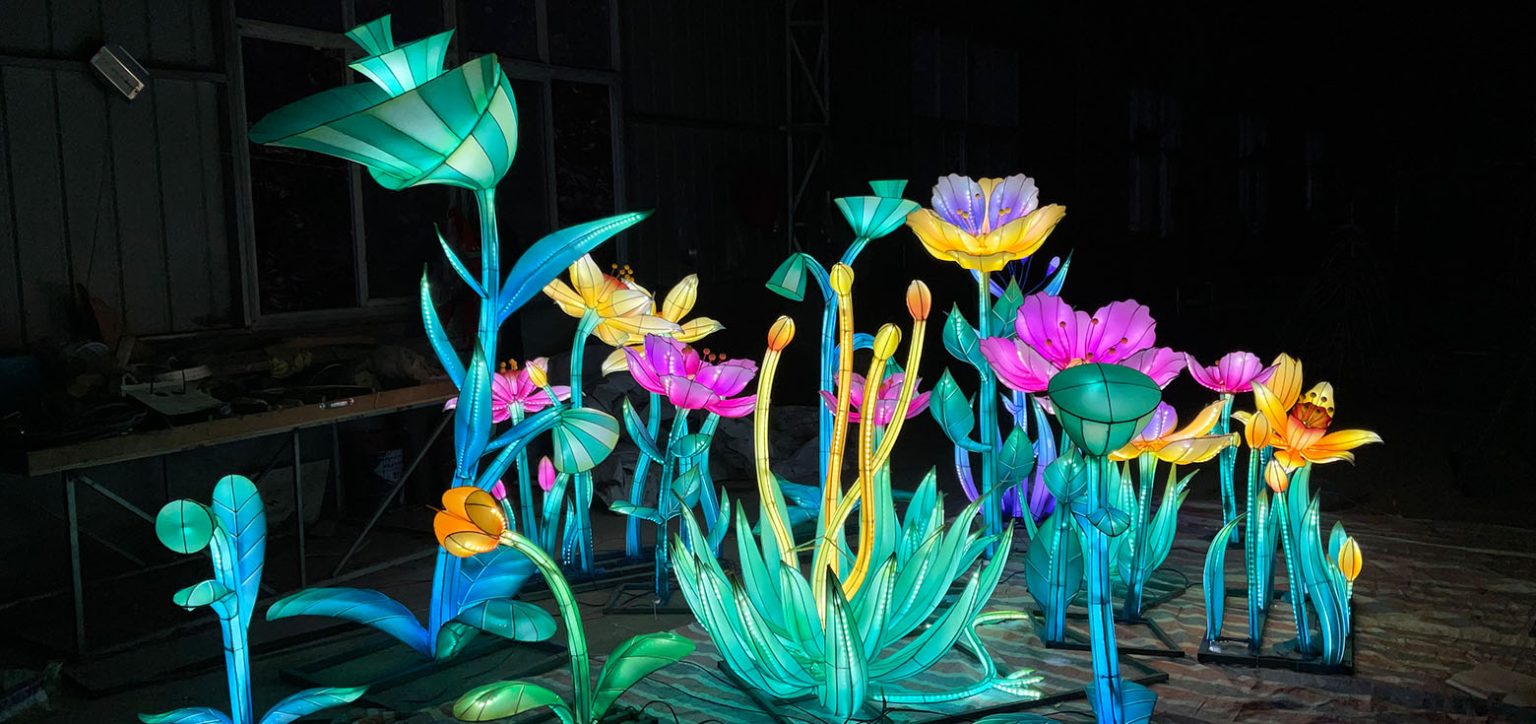
Embark! The Odyssey of a New Era!
The process of making Chinese monster lanterns is not only an artistic creation, but also a profound dialogue between traditional Chinese culture symbols and modern techniques. This intricate craft has been passed down through generations, carrying with it the wisdom and aesthetics of ancient times. It requires a delicate balance between upholding the rich traditions embedded in each design and embracing modern innovations that push the boundaries of what is possible.
Craftsmen must respect the age-old methods that have been refined over centuries, while also having the courage to explore new materials, technologies, and styles. It is a continuous journey of discovery, as artisans strive to find new ways to express the timeless beauty of lanterns, blending the past and the present to create works of art that resonate with people from all walks of life. This harmonious of tradition and modernity ensures that the art of lantern-making remains vibrant and relevant, constantly evolving while staying true to its roots.





